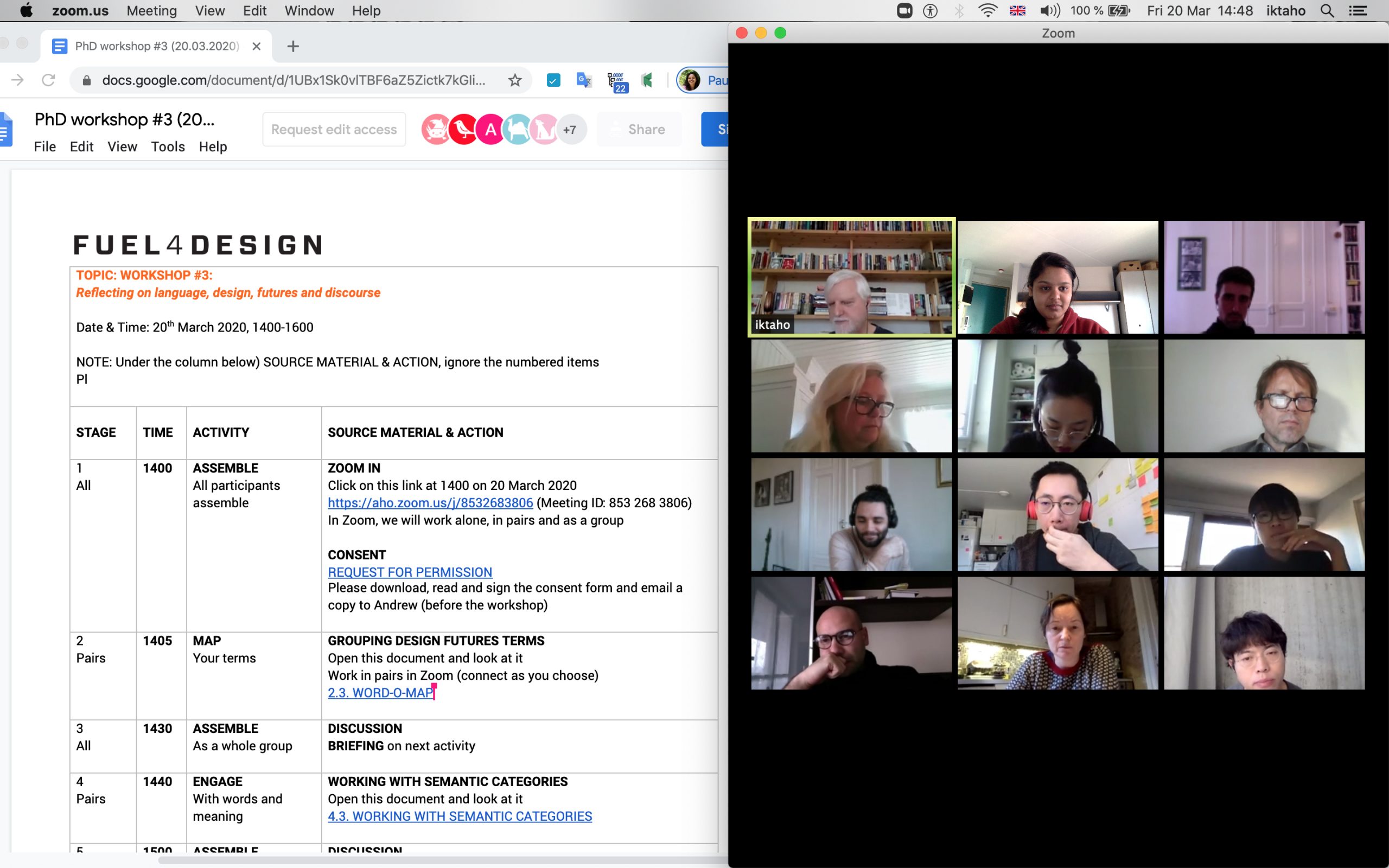
A screenshot of PhD students participating in the NEOLOGISER workshop over zoom.
Shaping futures design terms
Words are dynamic such that their meanings arrive, develop and change in use and over time. They are elastic and plastic such that they can be shaped and altered, moulded and given different identities and connections. New terms or ‘neologisms’ come into being through the combination of parts of others, or a change from one part of speech to another.
The NEOLOGISER workshops build on the DESIGN FUTURES LEXICON and pay attention to the role of words as design material. The tool intends to help designers become more sensitive to the importance of words in shaping futures by highlighting that words are carriers and shapers of meaning. Through a series of activities and resources, NEOLOGISER strives to familiarise designers with the idea of creating new words or ‘neologisms’.
Reflecting on language, design, futures and discourse, PhD Workshop #3. NEOLOGISER
AHO, 20 March 20202
Teachers and facilitators: Andrew Morrison & Palak Dudani
The workshop was designed to support the PhDs in generating new words for FUTURES DESIGN and DESIGN FUTURES LITERACIES by using a set of action prompts that reflect the character of word formation at a broad level and thereby also for their own research project and related design work. This involves designer-researchers becoming aware that neologisms are a common part of our everyday language and engages them to also become comfortable with the idea of making their own new words and consequently building concepts and developing related definitions.
The session worked through a number of related resources from the LEXICON to achieve these goals, as we now present. The session included participants from the project partners.
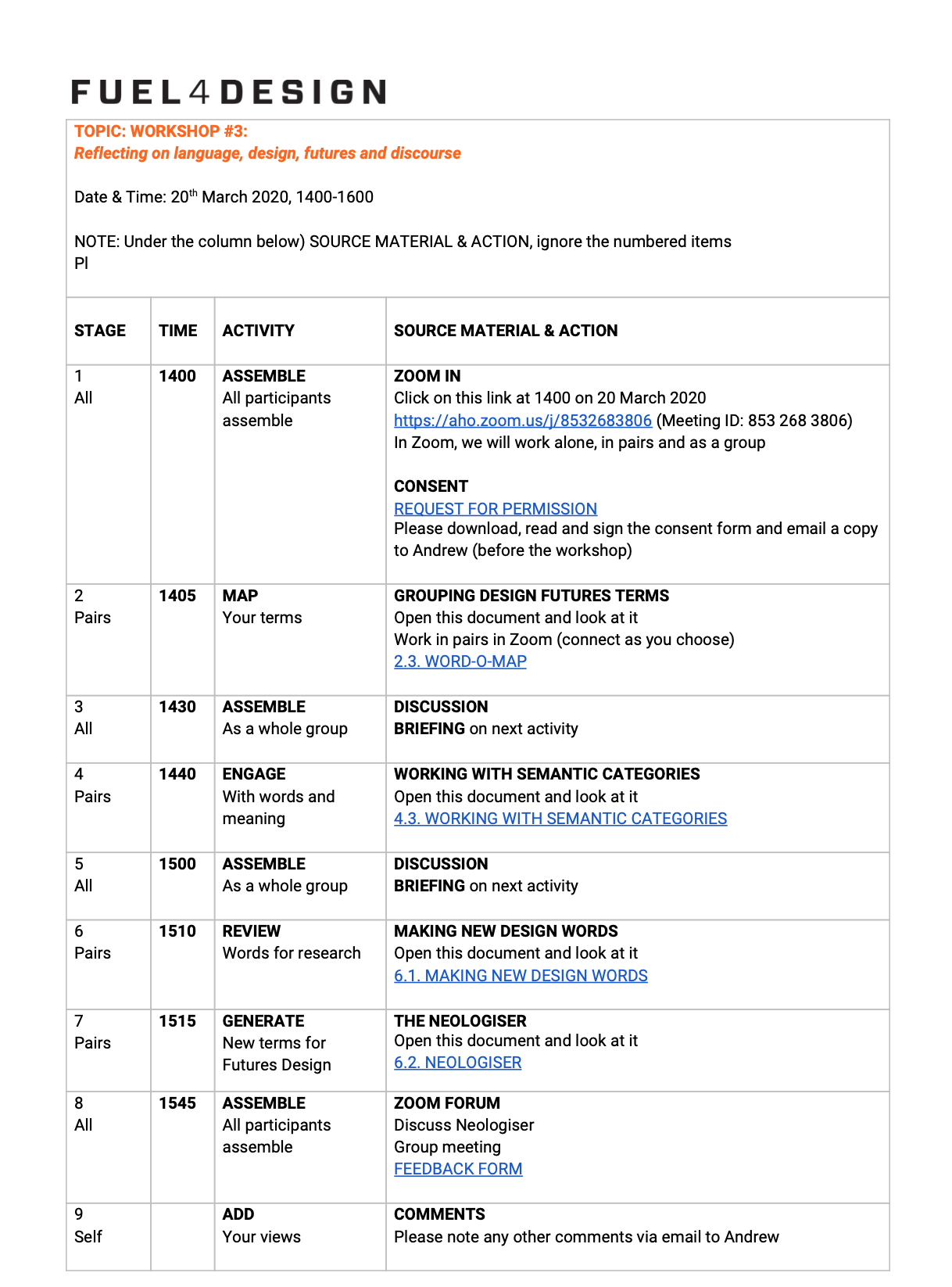
A screenshot of the Google document used to structure and facilitate the online and synchronous NEOLOGISER workshop
Stage 1: Grouping Design Futures Terms
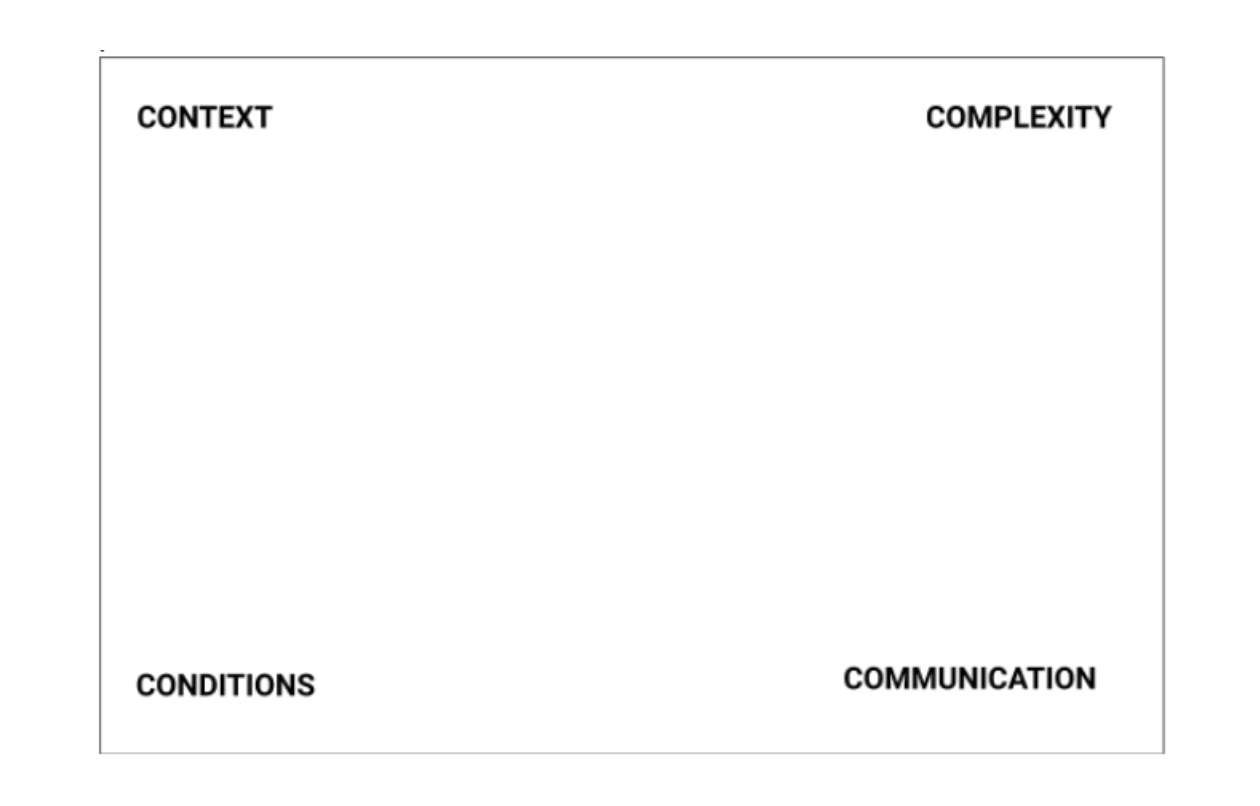
Screenshot of the template WORD-O-MAP
The workshops began with introducing 50 FUTURES DESIGN TERMS to familiarise the participants with terms and how they can be used to position their own research work. Once the participants have chosen the terms they find relevant for their work, they can begin to categorise it into the WORD-O-MAP template. Participants are able to make connections between the terms and reflect on how it relates to their project.
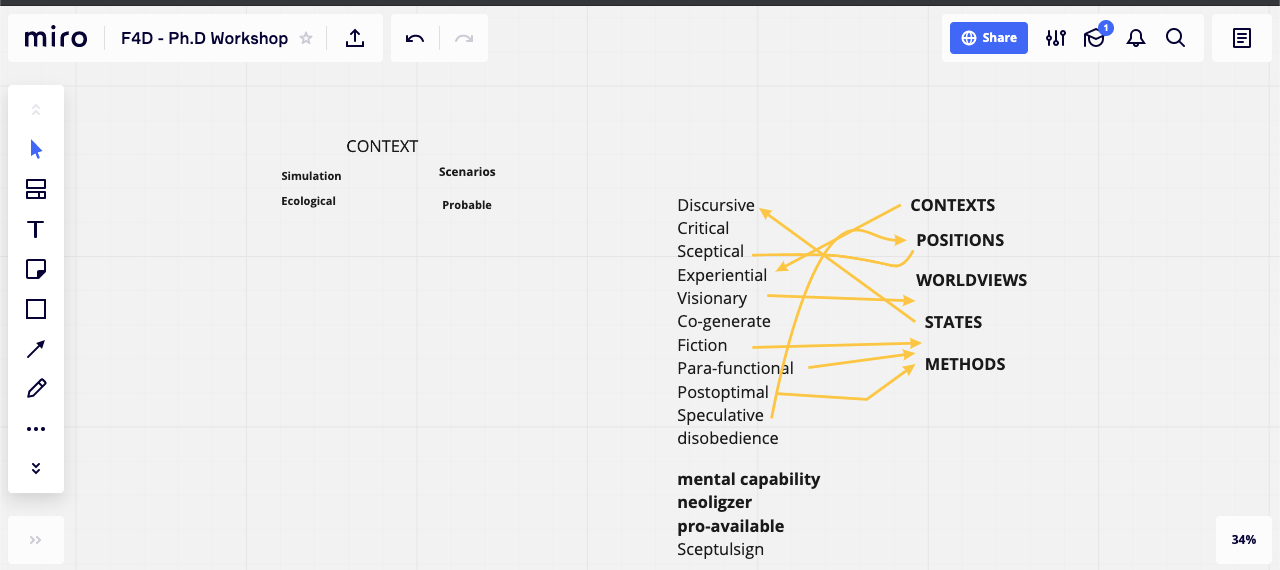
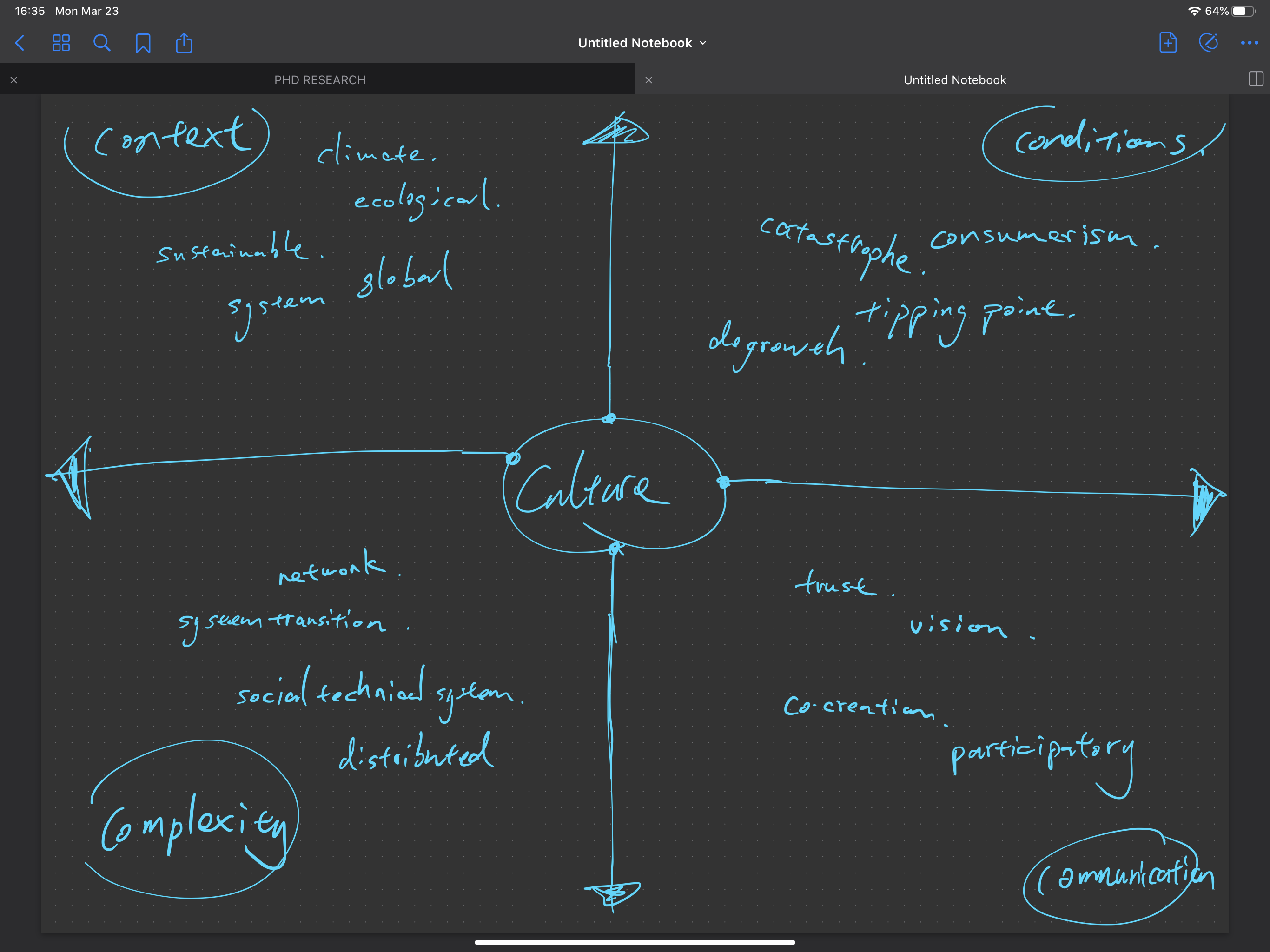
Screenshots of notes by a PhD students participant, showing the use of softwares such as Miro and digital notepad during the online remote workshop. Photo by Ammer Harb of PoliMI (top) and Nan Xia, guest at AHO (bottom)
In the workshop discussion after the exercise, one of the PhD student participants said that for them using the WORD-O-MAP ‘opened up new reflections and perspectives connected to my PhD-work’. Another participant found it ‘very helpful in segmentation and categorising the ‘understanding’ of particular terms also for the terms used in research that were not in the list of words.’ Reflecting on their own PhD thesis work, one of the participants reflected that WORD-O-MAP helped ‘uncover some terms that can represent a special situation, and make my research leaner’.
Stage 2: Working with Semantic Categories
This section focuses on words as meaning-making devices and how they can be shaped as just any other design material. To inspire the participants to look at a diversity of related words and identify and explore possible others, UNIT 5.3 WORKING WITH SEMANTIC CATEGORIES is shared in this stage.
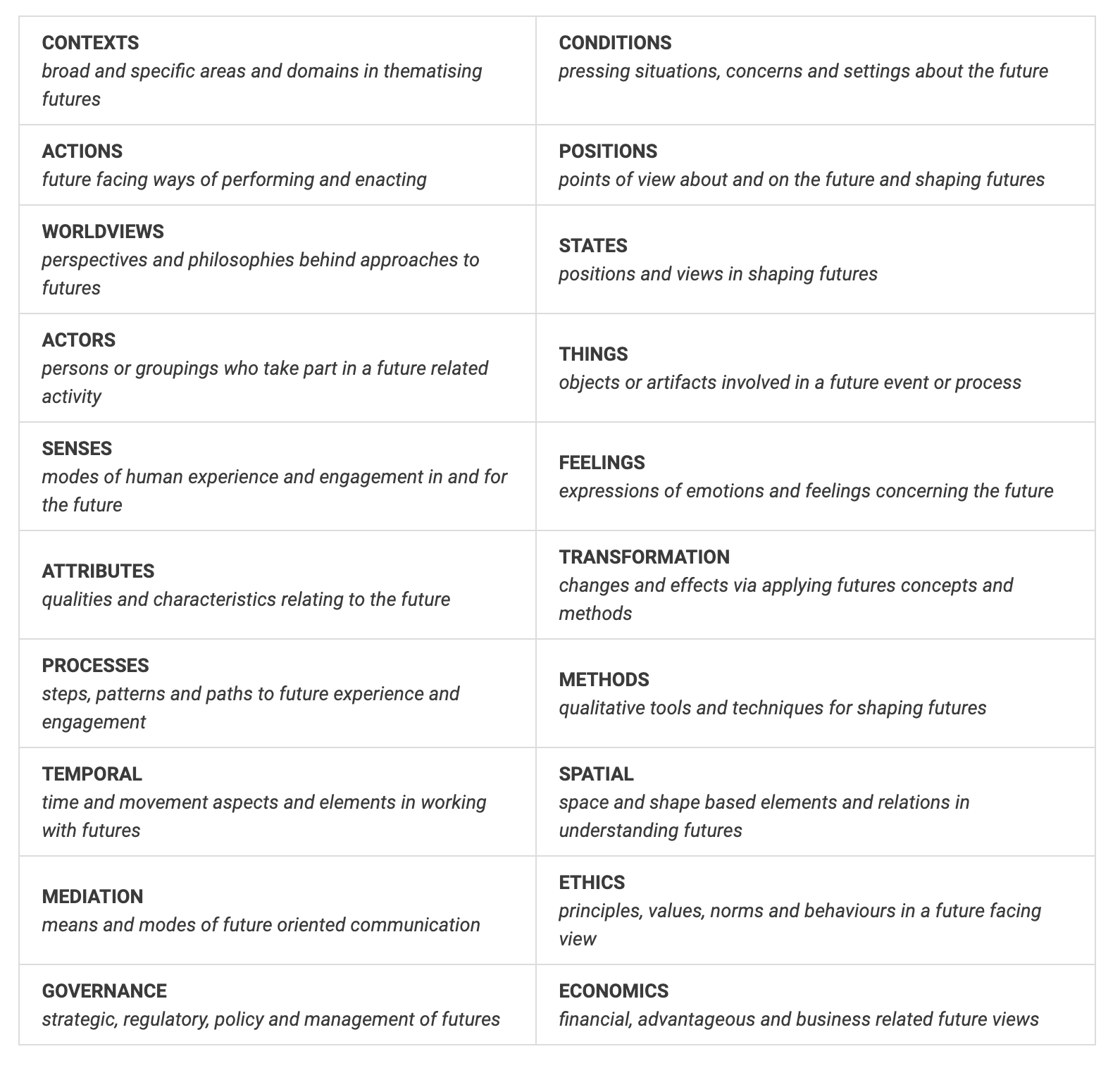
A screenshot of the TABLE OF SEMANTIC CATEGORIES
Participants go through TABLE OF SEMANTIC CATEGORIES which helps develop a specific sense of what different semantic categories are and how designers can sort design futures terms. Once participants have refined their own understanding, they go through TABLE Of SEMANTIC CATEGORIES (List with words) where they can see how futures terms are categorized.
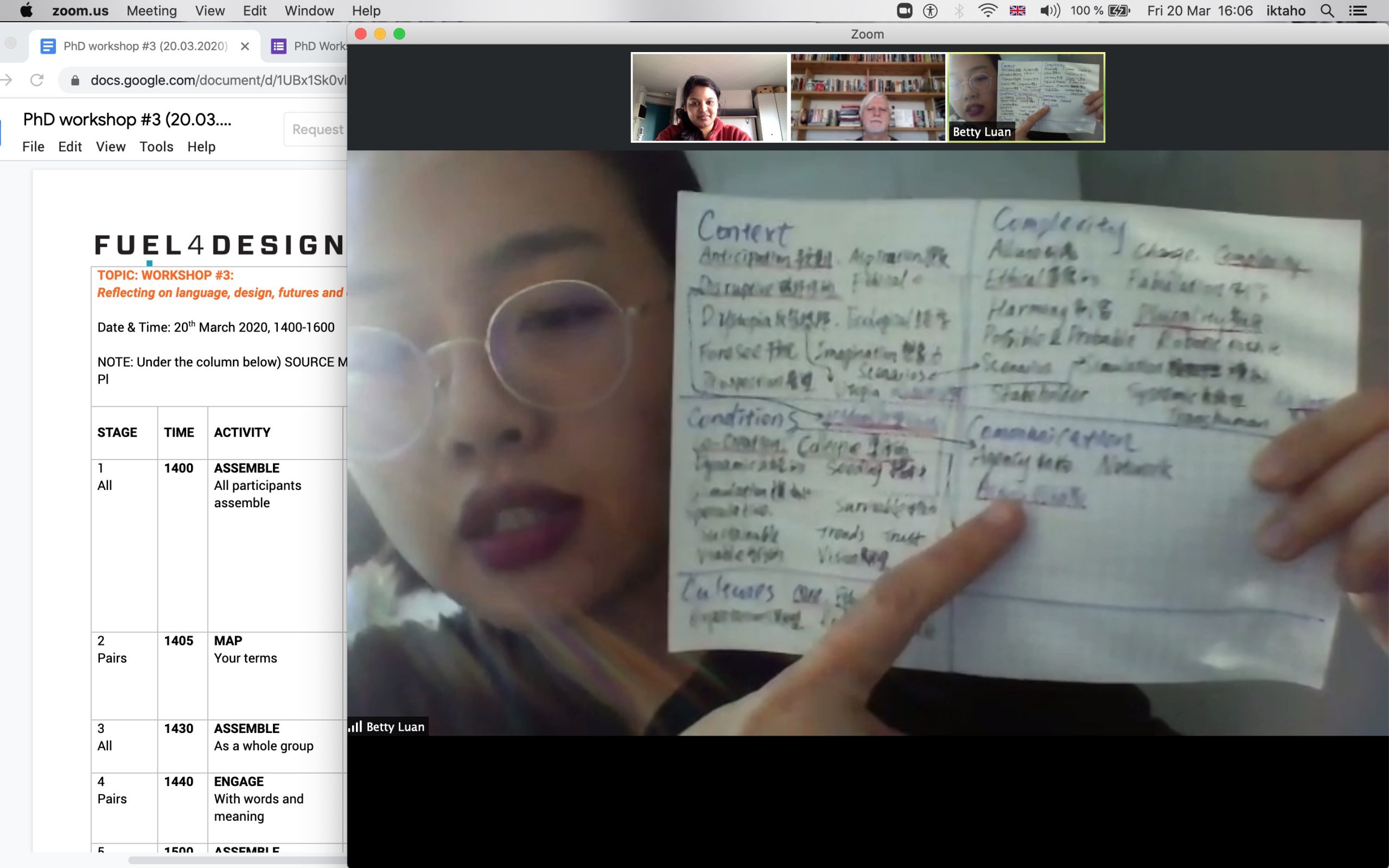
A screenshot of a PhD student discussing their notes over the zoom session of the workshop.
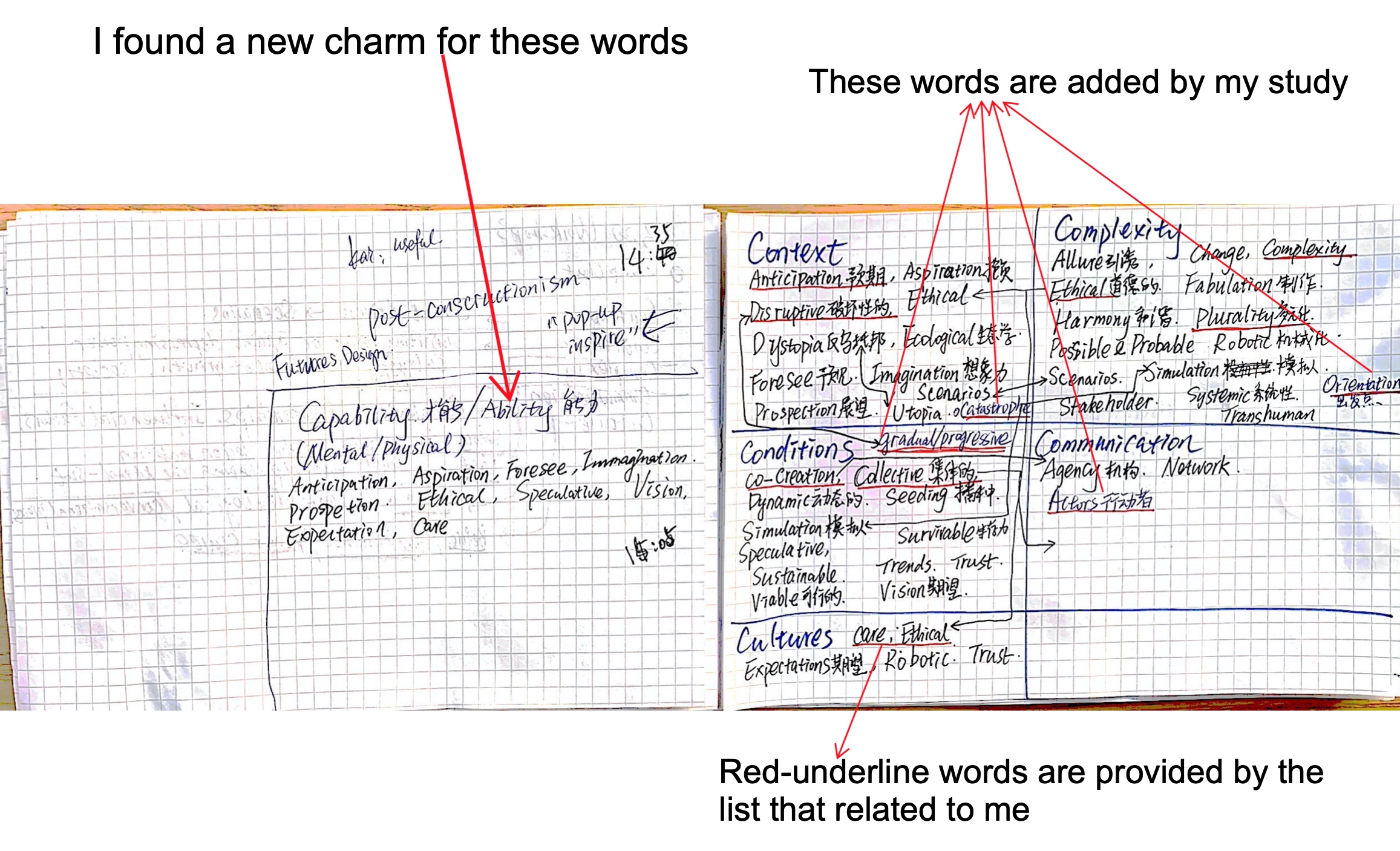
A screenshot of a PhD student notes, showing how participants documented their reflections during a remote synchronous workshop session. Photo by Zhilong LUAN
In discussion, one of the PhD students noted that the ‘categorisation helps a lot in seeing terms in their proper context.’ and that ‘it could be quadrants for design research.’ Another felt that ‘a classification that better fits the design research category can help me track more accurately and quickly.’ The participants felt that going through WORD-O-MAP first helped them ‘think where my words belong to’ and ‘it can help to explain some special designerly terms, especially when I am at a loss for words.’
Stage 3: Making new design words
As the UNIT 8.1.ON NEW FUTURES DESIGN WORDS notes:
Designers are always working with words in the ways they talk about what they are doing and what they encounter in the works of other designers. In these ventures, words may be formal and have some fixity. Yet they change and twist and turn as we use them and play with them, for serious and joyful reasons.
The participants go through UNIT 8.1. ON NEW FUTURES DESIGN WORDS and UNIT 8.2.MAKING NEW FUTURES DESIGN WORDS which introduces them to six ways of making new words.
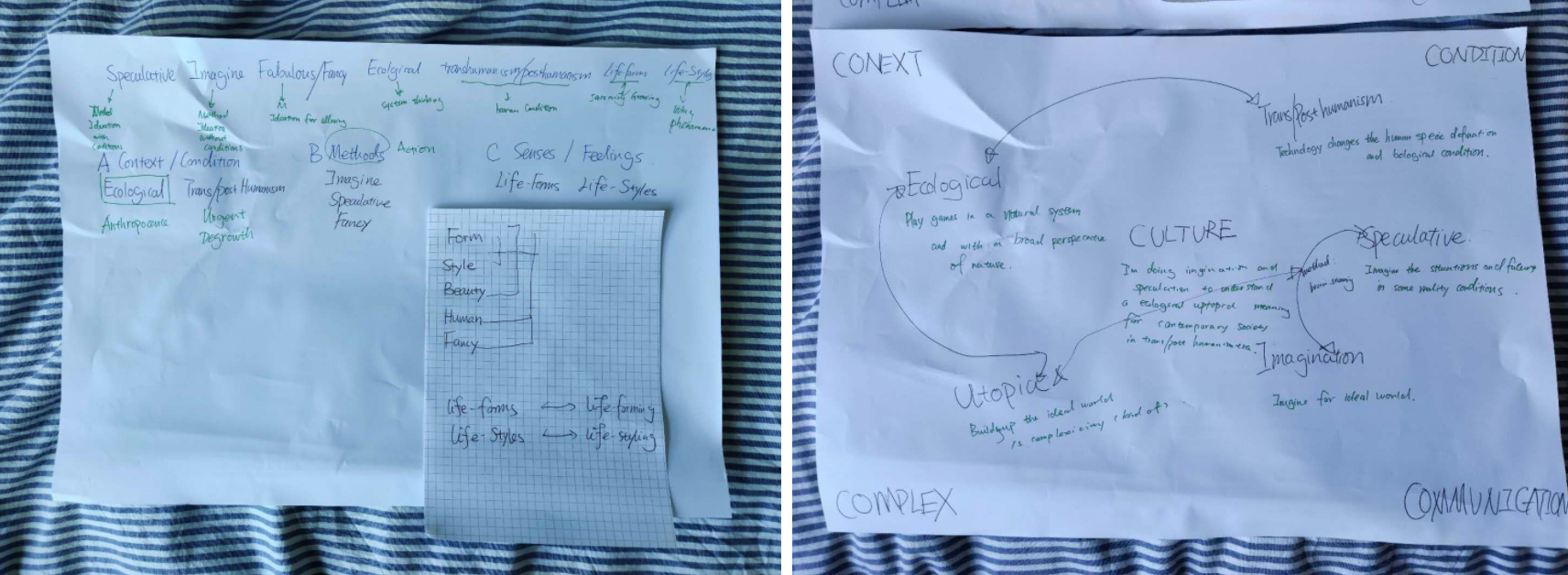
Photos of PhD student notes, showing how participants used paper formats while doing activities during the NEOLOGISER online workshop session.
Stage 4: NEOLOGISER
In the last stage of the workshop, the participants go through the NEOLOGISER and experiment with new words.
Some of the terms being put in categories made better understanding’ one of the participants reflected. Making neologisms further made the participants pay attention to the elasticity of the words ‘in particular for some of the vague terms or how the terms can be used interchangeably.
Discussion and Reflections
In the concluding discussion at the end of the workshop, the PhD student participants had begun to enjoy experimenting with new words. One of the participants noted that this workshop ‘showed the complexity of words and how difficult they are to define clearly.’ Another participant remarks how having an archive of words helped them see how ‘each of them gives new colours to my understanding. endless possibilities of variations.’
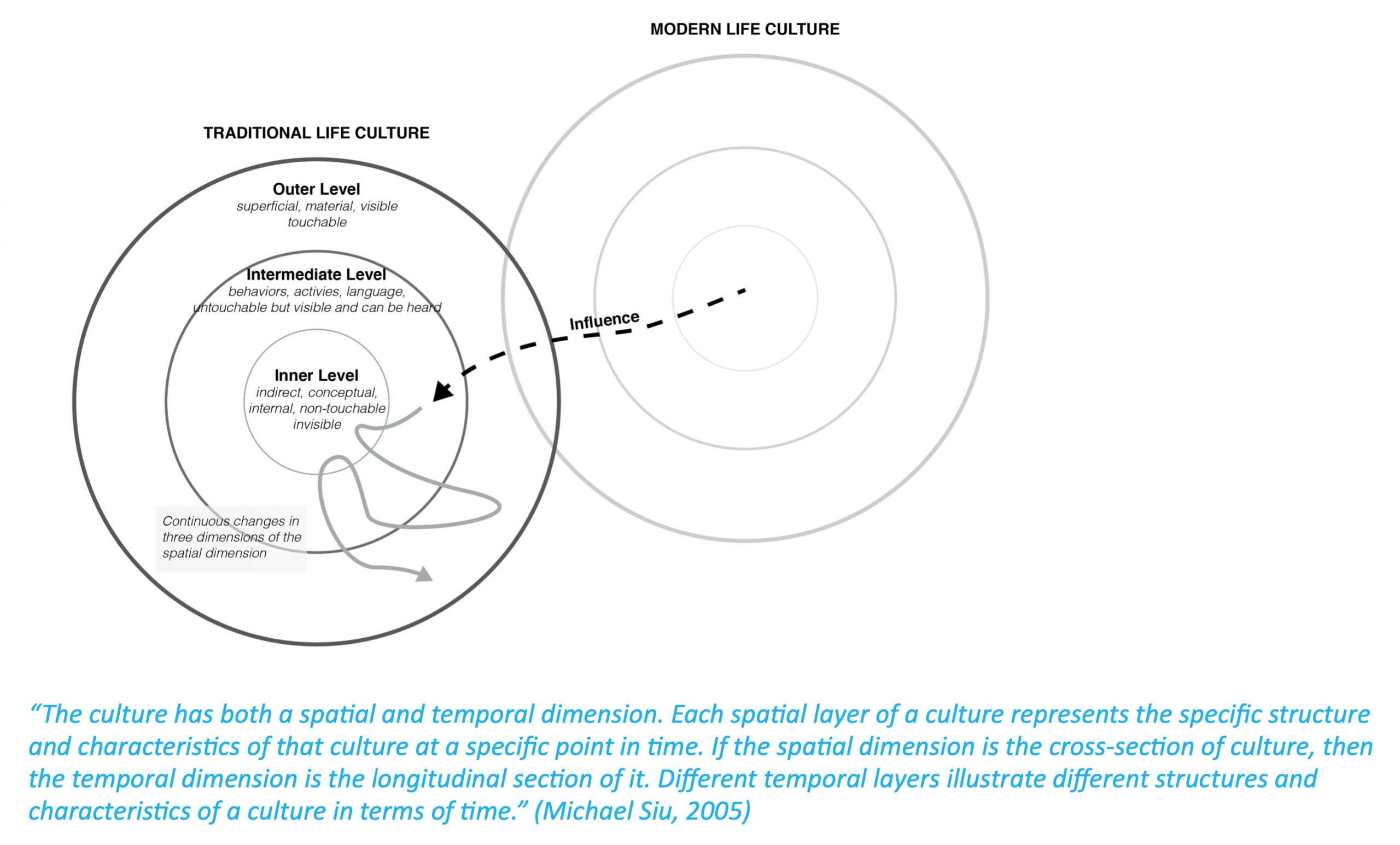
A screenshot of a diagram made by one of the PhD student participants showing the use of different visual formats for reflecting during the NEOLOGISER workshop. Photo by Nan Xia
A PhD student who’s looking at the role of culture within service design felt that this workshop helped them see how they can try and ‘use the en-activity to explain the value of the design process to culture.’ Another participant reflected on ‘terms I use and see them from other perspectives, to search for terms I use but could not find. That in itself is interesting. Do I only use terms from my “field” or should I look around for others?’